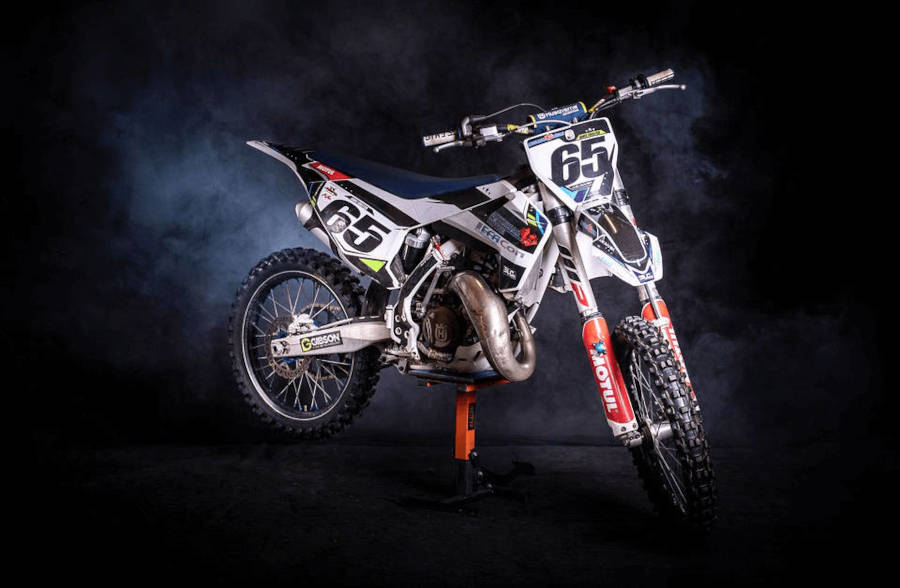
What Is A Street Legal Dirt Bike
If you own a dirt bike, or you are looking to invest in one, you must familiarize yourself with dirt bike laws.
In most States, riding a dirt bike off-road does not require any liability insurance or operator licensing in nearly all states. However, can you ride a dirt bike on the road?
Dirt bike riding is an exhilarating experience. Since they come in a variety of styles and diverse working mechanisms, you can ride a dirt bike nearly anywhere as long as you comply with the legal requirements of your locality.
In the eyes of the law, dirt bikes are off-highway vehicles (OHVs) and cannot be street legal unless you add specific features. As such, you need to review your state’s transportation code to ensure you are always on the right side of the law.
Licensing a dirt bike
A licensed dirt bike must meet the road safety standards present in your locality for maximum compliance if you want to ride it on smooth-surfaced roads.
The regulations made should be stated in the department of transport website in your jurisdiction. There are basic standards that coincide with each area, but make sure you conduct further research in case there are additional standards to be applied.
For instance:
- All states require that you carry a dirt bike license or permit while driving a bike.
- Riders below the age of 18 years are required to carry the dirt bike permit on their person before they can apply for a license upon attaining 18 years of age.
- In most states, the minimum age requirement for carrying a dirt bike permit is 15 years.
Failure to ride your dirt bike on a state or federal road with a license or permit, results in hefty fines, and in some cases, a jail term.
For example, Texas State Laws provide that dirt bike riders who ride without licenses or permits are liable to be charged with an infraction or misdemeanor, which is liable for punishment by a jail term of up to six months or a fine of up to $1,000.
Florida dirt bike riders also a similar punishment when it comes to riding dirt bikes on the road without licenses as one can be fined for up to $500, six months’ probation, or two months in jail.
Following the U.S. Department of Transportation Federal Motor Vehicle Safety Standard regulations (FMVSS), here are some other basic standards of ensuring the legitimate licensing of a dirt bike and maximum road safety. It includes the installation of:
DOT approved headlights
Some dirt bikes come with pre-installed headlights, but the option to switch from high to low setting might not be present. The lights should have a low beam and a high beam option as well as an indicator to show which one is presently in use.
A taillight and a brake light
Physically these might be in the same types of light, but the activation of each differs. You should be able to switch on the taillight at the same time you switch on the headlight.
As for the brake light, it should be activated by the front and back brake paddle when pressure is applied. The battery in use should be able to power the brake light continuously for at least twenty minutes.
DOT approved turn signals
The most common type of turn signals is the LED turn signals. For bikes manufactured before January 1, 1973, they need not have turn signals, but some States require that all bikes have electric turn signals, like California and Arkansas. There are also additional rules in some states as to the appropriate place to install the lights.
Mirrors
Depending on the state in question, your dirt bike might be required to have one or two rear-view mirrors.
For instance, the States of Alaska requires its roadworthy motorcycles to have two rear-view mirrors, while States like Arizona, Arkansas, California, and Connecticut require only one rear-view mirror. Some mirrors are easily collapsible to ease damage when they run into an immobile object.
Horn
The horn installed can be manual or electric. Some states like Minnesota mandate electric horns. The horn is used to warn on-coming vehicles or pedestrians of your road presence.
Fuel tank
A fuel tank is already present on a dirt bike. It should be adjusted to fit within state regulations. The Department of Transportation (DOT) requires the covering of fuel tanks with steel casing for maximum safety when riding on the road.
License plate
Finally, your dirt bike should have a license plate. Different states have different installation positions for license plates. Check with your local department of motor vehicles or the department of transportation in your state for the specific regulations when it comes to license plates.
For instance, the State of California requires the license plate of a motorcycle to be not more than 60inches and not less than 12 inches from the ground. Similarly, Florida requires motorcycle owners to mount their license plate in a clockwise manner to ensure numbers and letters are read from top to bottom.
Transforming a bike to a dual-purpose bike
Once you make the adjustments as required by law to your dirt bike to make it road-worthy, it becomes a dual-purpose bike. You can buy a dual-purpose bike off the shelf, but you need to analyze the cost of transformation and purchase to see which option is best suitable for you.
The cost of transforming a standard dirt bike, such as motocross or trail riders, to a dual-purpose bike might be quite high, depending on the model of dirt bike in use.
If the type of bike is motocross, the cost might be higher as there is no sustainable power source other than its on-off button. You will need to upgrade your entire electrical system by purchasing and installing a stator and battery.
Some manufacturers sell full conversion kits for dirt bikes, resulting in the cost drastically reducing. However, you need to confirm that all the items in the pack are up to the legal standards within your state to reduce wastage on parts you do not need or intend to use.
Advantages of transforming a dirt bike to dual-purpose bike
- Lightweight and easy to carry when they fall over.
- Quite flexible, and you can easily switch from rough road trails to the streets.
- Excellent gas mileage, meaning that the bike can travel many miles using a certain amount of fuel; thus, saving on fuel costs
- Easy to use for beginners since all the function switches are readily available.
- They have a single-cylinder engine that is simple and lighter in terms of functionality.
Disadvantages
- The cost of transformation can be very steep, depending on the area of residence and the type of dirt bike. For instance, it is complicated to license a dirt bike in California.
- High-performance materials of the dirt bikes need frequent maintenance checks to ensure efficient running. These checks can be very costly in the long run, especially if you need to replace the parts, as it requires replacement of all the high-performance parts.
- A dual-purpose bike is heavier than a motocross bike and is not ideal for high-speed races.
Conclusion
Different states have different scopes to make a dirt bike road-friendly. There are other state-specific requirements, such as installing a speedometer and an odometer. The tires might also need upgrading as they might be too big. Use DOT-approved tires at all times.
